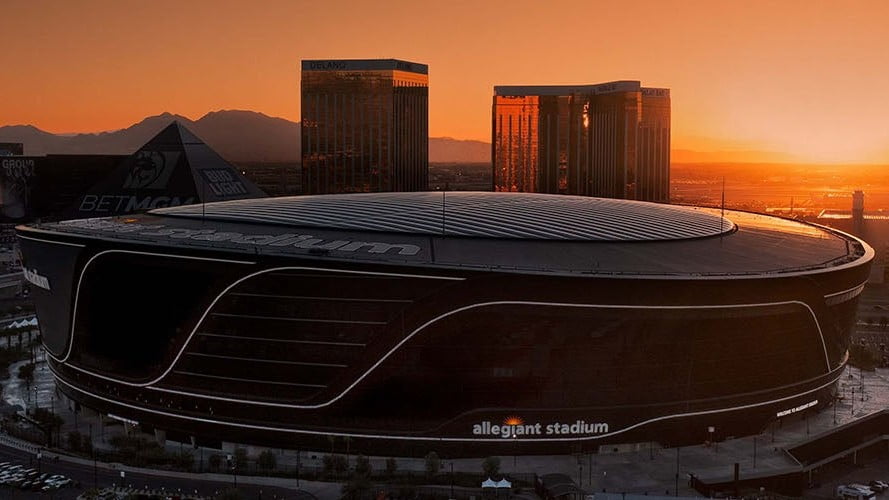This Year’s Super Bowl is 100% Solar-Powered
2 min read
Allegiant Stadium in Las Vegas will set a milestone this Sunday as the first NFL stadium to host the Super Bowl using entirely renewable, solar energy.
The stadium, which will host Super Bowl LVIII and is also home to the Las Vegas Raiders, converted to renewable energy in 2023, and the first game using completely clean energy was on Oct. 9. It is now powered by more than 621,000 solar panels, according to a CBS report.
Allegiant Stadium’s partnership with NV Energy, which supported the solar integration, is part of a greater effort by the City of Las Vegas, where city facilities run completely on renewable energy. Plans are also in place to further expand renewable energy generation throughout the state of Nevada.
NZero Works with Allegiant Stadium to Reduce Emissions
Not only does the solar power installation allow the stadium to significantly decrease its environmental footprint, it also reduces energy costs for the 65,000-person capacity stadium. The site also recently gained LEED certification, confirming its standing as an environmentally-friendly building.
Data decarbonization platform, NZero, is working with the Raiders and Allegiant Stadium to report their ongoing decarbonization efforts. The company estimates that the Raiders will reach a 68% reduction across Scope 1, 2, and 3 emissions in 2024.
“This is certainly an incredible moment for sustainability in sports as the Raiders and Allegiant Stadium seek to drive change that helps the planet and inspires other organizations,” said Adam Kramer, CEO of NZero. “Allegiant Stadium isn’t just the greenest stadium in the U.S., but the highest-grossing, proving sustainability and business are not mutually exclusive. We certainly see this as something more stadiums can take on in the future.”
NFL Green Works to Reduce the Environmental Footprint of Sports
The NFL established NFL Green in 1993 to improve sustainability efforts within the organization and has reportedly worked to make the Super Bowl the greenest professional sports event in the U.S.
Last year’s Super Bowl in Arizona focused heavily on reducing waste, achieving over a 92% waste diversion rate and removing 7,849 pounds of trash from the nearby Salt River in the largest NFL Green clean up to that point. Sporting event attendees across the U.S. reportedly cause about 39 million pounds of trash each year, so waste diversion remains a common goal for many sports organizations working to improve sustainability practices.
In addition to its commitment to renewables, Allegiant Stadium reportedly repurposes, reuses, or donates 20 material streams and collects about 12,000 pounds of food scraps, some of which are processed through its on-site composting program.





